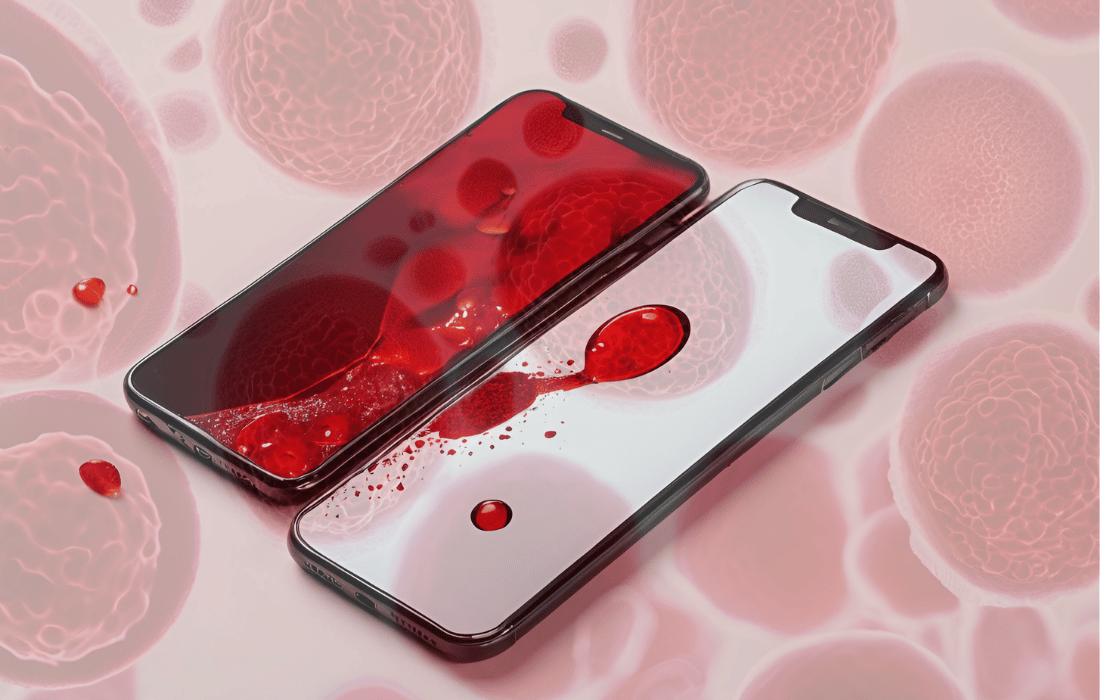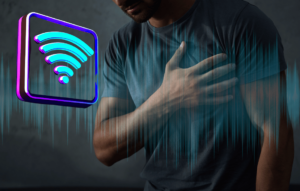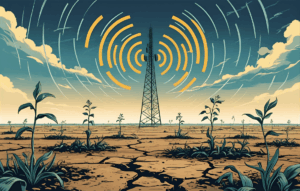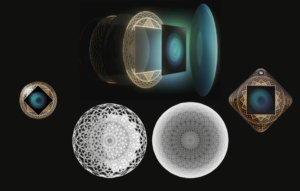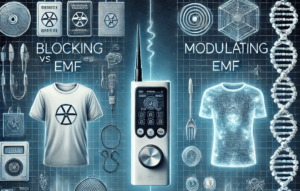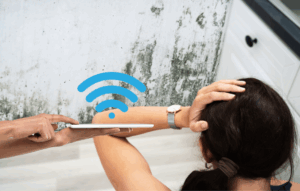A healthy, 62-year-old woman underwent a routine ultrasound scan. She had no history of blood disorders, cardiovascular issues, or chronic illness. Researchers placed a powered-on but idle cellphone on the back of her knee—no active calls, no data usage, just connected to Wi-Fi, Bluetooth, and cellular networks.
Five minutes later, ultrasound imaging revealed a significant change: visible red blood cell clumping in the popliteal vein, a pattern known as rouleaux formation—red blood cells stacked like coins.
Published on April 23, 2025, in the journal Environment: Science and Policy for Sustainable Development, the study was conducted by Dr. Robert Brown and ultrasound technologist Barbara Biebrich to examine whether cellphone radiation could induce measurable physiological changes within minutes of exposure.
The phenomenon was further confirmed when the experiment was repeated multiple times, and each instance yielded the same result. These changes were not isolated or random but repeatable and consistent, demonstrating a cause-and-effect relationship between cellphone radiation and blood behavior.
Rouleaux Formation: Understanding the Basics of Blood Aggregation
Rouleaux formation refers to an abnormal pattern where red blood cells (RBCs) adhere to one another, forming stacks. Under normal physiological conditions, red blood cells remain separate due to their negative surface charges, ensuring proper flow and eff
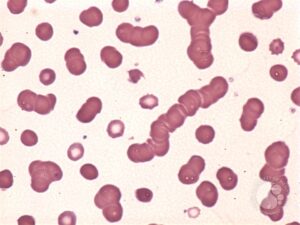
icient gas exchange.
However, in rouleaux formation:
Blood viscosity increases
Oxygen delivery efficiency declines
Circulatory function is impaired
Risk of microvascular blockages increases
This condition is commonly observed in individuals with infections, autoimmune diseases, or certain cancers. The idea that brief wireless radiation exposure could induce a similar response in a healthy individual is concerning.
What makes rouleaux particularly dangerous is its potential to go unnoticed. Individuals may feel perfectly fine while their blood is slowly becoming more sluggish and less efficient at transporting oxygen. Over time, this could result in subtle symptoms like fatigue, low-grade inflammation, or more severe issues such as increased clotting risk or cardiovascular strain.
The Experimental Design: In Vivo Imaging Through Ultrasound
The researchers repeated the exposure protocol with the same subject multiple times over three months. In each session, the results were consistent: rouleaux formation appeared shortly after cellphone exposure.
On one occasion, the woman exhibited rouleaux prior to the initial scan. Upon inquiry, she reported having kept her phone in her pocket beforehand.
In a variation of the experiment, the researchers placed the phone one inch away from her body. Even without direct skin contact, rouleaux formation still occurred, indicating that the radiation penetrated deep tissue layers.
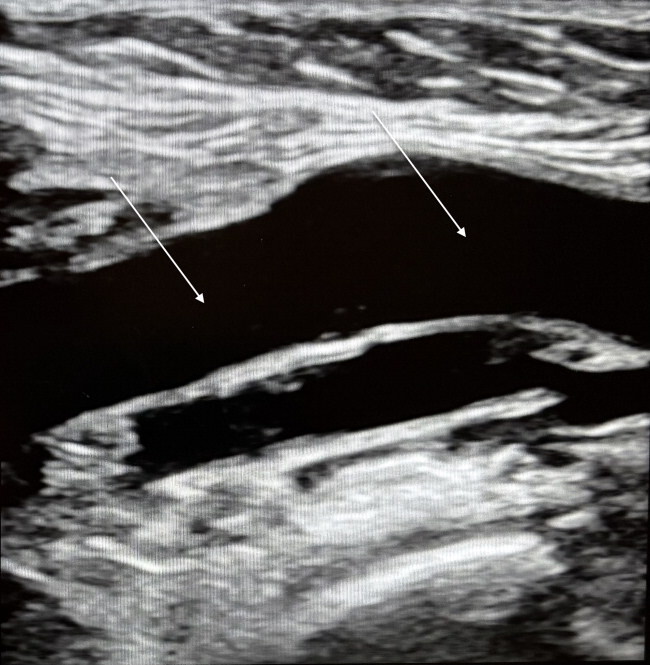
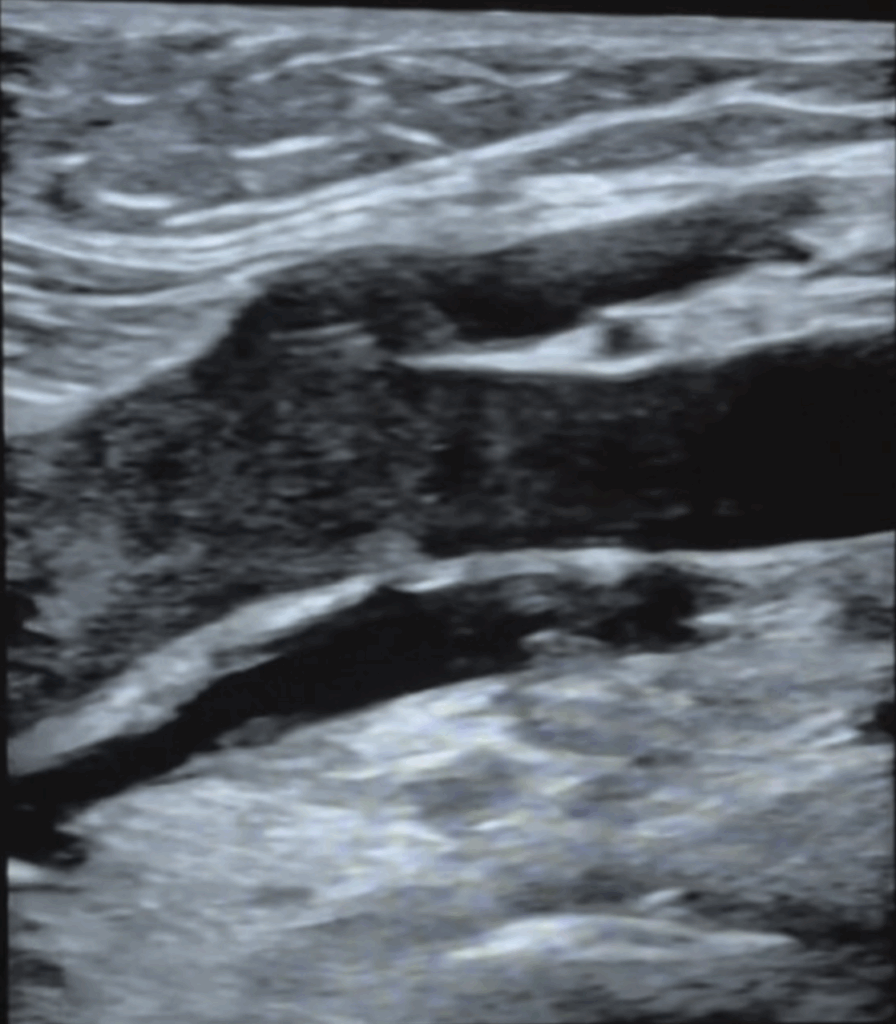
Ultrasound comparison: normal popliteal vein (left) and rouleaux formation after 5 minutes of cellphone exposure one inch from skin (right). Source: Environment: Science and Policy for Sustainable Development
Ultrasound imaging was performed using a 2–9 MHz linear transducer. Since red blood cells are only 7–9 microns in diameter and undetectable individually at that frequency, it took clumps of over 77 cells to appear on the scan, underscoring the severity of the aggregation.
This imaging technique removes some of the ambiguity often present in laboratory-based “live blood cell analysis”, which can suffer from sample contamination or misinterpretation. The use of ultrasound in real time, in vivo, provides a more objective method to observe blood dynamics and lends credibility to the findings.
Implications for Public Health
Current regulatory frameworks, such as the FCC’s Specific Absorption Rate (SAR) standards, focus primarily on thermal effects of wireless radiation. This study challenges those assumptions by demonstrating biological changes occurring without heat—raising the need for a reassessment of safety thresholds.
Dr. Brown, a diagnostic radiologist with more than three decades of experience, emphasized:
“Because of the impact on gas exchange and increased blood viscosity due to clumping, it is possible rouleaux could account for the unusual uptick in once-uncommon disease processes…”
Potential implications include:
Elevated risk of hypertension and stroke
Contribution to metabolic disorders such as obesity and diabetes
Increased incidence of vascular inflammation and microclots
Possible exacerbation of pre-existing conditions like long COVID or autoimmune disease
What makes these findings particularly alarming is their rapid onset. Most chronic diseases develop over years, if not decades, through accumulated damage. But the physiological effects observed here occurred within just minutes.
Expert Commentary from Devra Davis
Dr. Devra Davis, Ph.D., MPH, founder of the Environmental Health Trust, stated:
“This finding of clumping in the blood after only five minutes of direct cellphone exposure should give pause to all who keep phones close to their bodies.”
Davis has long warned about the biological impact of wireless radiation, and this study provides visual evidence supporting those concerns. It validates years of anecdotal reports from electrohypersensitive individuals who experience symptoms such as headaches, brain fog, and fatigue around wireless devices.
Exploring the Biological Mechanisms
The biological effects of rouleaux formation are not just visible under ultrasound—they represent functional changes that may alter the way our blood, tissues, and organs behave under wireless stress.
Reduced Oxygen Transport and Cellular Energy
When red blood cells aggregate, their surface area for oxygen exchange diminishes. This can lead to localized tissue hypoxia and a reduction in mitochondrial energy production. Symptoms may include:
Fatigue
Brain fog
Impaired physical performance
Chronic inflammation
Slower recovery from exercise or illness
In athletes, this could mean compromised endurance or slower muscle repair. In older adults, it could accelerate neurodegeneration or cognitive decline. For individuals with underlying health issues, it could be a tipping point toward more serious events.
Blockage in Microvasculature
Clumps of red blood cells can obstruct capillaries and small vessels, potentially leading to:
Cerebral microstrokes
Cardiac stress and irregularities
Retinal ischemia and visual disturbances
Silent organ damage over time
This form of microvascular injury may go undetected in routine health assessments but contribute to long-term disease progression, especially in vulnerable populations.
Why This Study Matters
This study not only documents a striking physiological reaction to wireless radiation but also calls into question the adequacy of current safety guidelines.
Challenging the Status Quo
The FCC’s SAR limits are based on outdated models that assume damage only occurs from thermal exposure. However, this research reveals cellular-level changes at non-thermal levels, within standard exposure limits.
With wireless devices now omnipresent and multi-frequency (Wi-Fi, Bluetooth, 4G/5G), the regulatory paradigm may no longer reflect biological reality.
The Role of Industry
There is little incentive for large telecom companies to investigate or publicize adverse health effects from their products. As such, independent, peer-reviewed research like this plays a critical role in public health awareness.
Many experts argue that existing safety standards are inadequate and fail to account for long-term, cumulative exposures. The study’s repeatability, objectivity, and use of in vivo methods offer a compelling counter-narrative to claims that cellphone radiation is harmless.
Prior Research in Frontiers in Cardiovascular Medicine
An earlier version of this study was published in Frontiers in Cardiovascular Medicine in February 2025. It presented similar findings but did not include the “one inch away” variation.
This latest publication expands the evidence base and addresses deeper tissue exposure concerns, broadening the potential audience to include environmental scientists, clinicians, and policymakers.
Both studies support the conclusion that non-ionizing radiation from everyday devices is not biologically inert, even at low intensities.
Key Questions for Future Research
What is the duration of rouleaux persistence post-exposure?
Are effects systemic or localized?
Do factors like age, gender, or pre-existing conditions affect susceptibility?
What other devices (e.g., smartwatches, cellphones, AirPods) might induce similar effects?
Can antioxidants or lifestyle changes mitigate these effects?
Is there a cumulative effect from daily or prolonged exposure?
Could certain individuals, such as children or those with clotting disorders, be more at risk?
What impact does this have on reproductive health or fetal development?
Preventive Measures: Reducing EMF Exposure Risk
While further studies are warranted, individuals can adopt precautionary practices:
1. Keep Devices Away From the Body
Avoid storing phones in pockets or bras
Use external bags or cases to carry devices
2. Use Airplane Mode When Not in Use
Particularly important during sleep or transit
Disable Bluetooth and Wi-Fi when not needed
3. Opt for Wired Accessories
Use wired earbuds or speaker mode for calls
Avoid Bluetooth headsets for prolonged use
4. Create a Low-EMF Sleep Environment
Keep phones out of bedrooms
Use analog clocks instead of phone alarms
Avoid charging phones near your bed
5. Consider EMF Protection Technologies
Aires EMF protection devices restructure wireless fields to reduce biological stress
Ideal for placement on phones, routers, and laptops
Do not block radiation, but harmonize it for safer interaction with the body
6. Spend Time Grounding
Walking barefoot on natural surfaces may help offset oxidative stress
Grounding mats and sheets can provide similar benefits indoors
7. Limit Screen Time and Device Usage
Set boundaries for non-essential use
Encourage children to play outdoors and limit tablet or smartphone time
Concluding Reflections
The implications of this study extend beyond personal habits. They call for a broader conversation about the safety of everyday technology and the standards by which those devices are regulated.
If blood clumping can occur within minutes of exposure, what cumulative effects might we expect over years of near-constant use? Are current safety guidelines truly protective, or simply convenient for manufacturers?
This is not a call for fear-driven avoidance of technology. Rather, it is a call for informed, balanced engagement—where the invisible becomes visible, and precaution becomes part of the design.
While the answers are still unfolding, one thing is clear: Precaution is no longer paranoia. It is science catching up with the realities of a connected world.

